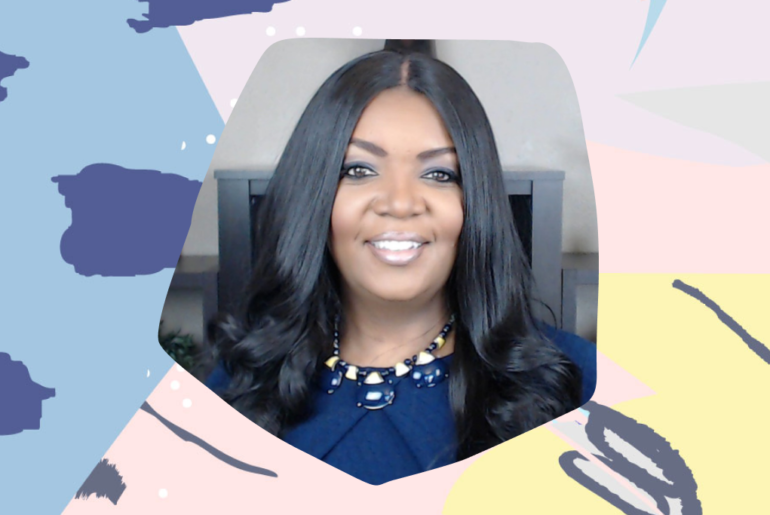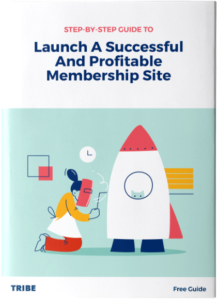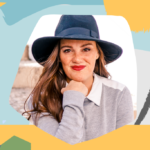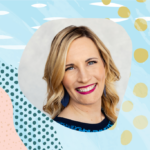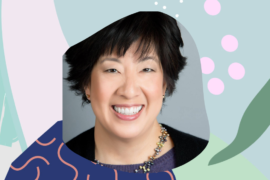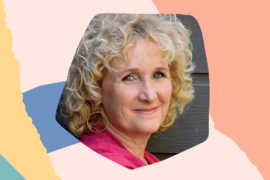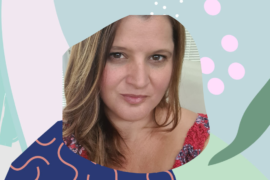Angela Myles worked in and out of administrative jobs while her husband Victor drove tanker trucks. As they had children and grew their family, long hours started to wear on them, and the couple needed to make a transition to change their lives for the better. A stranger gave Victor the guidance and advice to build a nonprofit to work with homeless men, and they soon set out to master the art of writing – and receiving – grants.
Now, as the Myles Factor, and through their membership, Fundable University, Angela and Victor teach churches and faith-based nonprofits how to set up community programs and get the funding they need to build their million-dollar visions.
Today, Angela joins the podcast to tell the story of the trucking accident that changed the course of her and Victor’s lives, how the membership model helped them whether personal crises, and how they built an incredible community that has had an extraordinary ripple effect.
Key Takeaways
- How a message from a stranger at a Baskin-Robbins changed Angela and Victor’s lives and led them into the nonprofit world.
- What Angela and Victor did to grow their nonprofit from $500 to $1.2 million in funding over the course of 24 months.
- How Angela and Victor embraced the membership model.
- How experiencing abundance makes it easier to give it back.
Free Give
FREE Guide – Launch & Grow a Profitable Membership Site
Ready to reclaim your time and attract more monthly paying customers? Our step-by-step guide will show you how to build a membership site that turns your passion into recurring profit. Click here to download!
Memorable Quote
- “Whatever it is that’s been placed into your hands to do, it’s possible that everyone has a vision, they just have to build it. And sometimes you just need an architect and some other people to help you with tools, to help you put all those processes and things together.” – Angela Myles
Episode Resources
Transcript
Read The Transcript
Shelli Varela: Angela Myles, welcome to the It’s a TRIBE Thing Podcast. How are you?
Angela Myles: I am doing amazing. Thank you so much, Shelli. I’m great.
Shelli Varela: I love your story and I am exceedingly excited to share your story with our audience because this story is the stuff that a movie could be made of. But before we get into that, it would be amazing if you could tell us who you are, who you serve, and then how you got to be this incredible membership site owner. And this is the story that people are going to want to hear.
Angela Myles: Sure. Well, I’m Angela Myles. I’m one-half of The Myles Factor, myself and my husband together. His name is Victor. We’re known as the Myles Factor and we teach churches and faith-based nonprofits how to set up their community programs so that they can get the funding they need to build their million-dollar visions, just like we did.
Shelli Varela: Unreal. First of all, thank you for doing the work that you do because you are allowing and arming people who have a calling on their heart to be able to create that something special in the world but maybe don’t have the background that you have come to have. Beautiful segue to how did you come to have that story? Who were you at the very beginning, before you had a nonprofit, before you had a membership, if you can take us all the way back and share with us your journey?
Angela Myles: Sure. So, years back, my husband and I, we’ve been married for 25 years now but for the first 10 years or more of that marriage, he was working as a truck driver of different sorts. He went from recycle to oil refinery to finally driving a tanker truck. And I was in and out of different jobs from the point of being either doing something in healthcare or doing something administratively. Both of us are college backgrounds, didn’t even cover what we ended up being. He was in criminology. I went to school to be a pediatrician. Of course, our lives took a totally different turn and we married and had children. But as he started to work in that process, he had to work long hours, and sometimes he would have to leave home at three in the morning and wouldn’t get back home until seven o’clock. And it just became very cumbersome on him and of course on us as a family because we have boys, so they were in sports and different things.
So, I really wanted him to be able to transition but we didn’t know what that looked like or how or what we would even do it from there. And lo and behold, as he was working in his tanker truck, he actually got into a really bad traffic accident one day when he was going down the highway and traffic suddenly stopped and the back of his tanker began to bounce and take off and go into the other side. So, he slammed into one side of the freeway divider back into the other side and ended up under the dashboard of the passenger side. As he reached out to me later and was telling me he was on his way to the hospital. And all I could do because I was about 50 miles away in a different county out shopping with my mom and I’m trying to get on the freeway with the kids in tow trying to get to him and I’m listening to the news station and I hear them saying, “Okay. The medivac helicopter’s coming out. There’s a bad accident on this freeway,” and I’m knowing that that’s him and I’m just like, “Oh my god.” I don’t know how he is, how he’s doing. I knew he had enough energy to call me but I knew nothing else.
By the time I got there, he told me the amazing story about how he actually went through the process of he was in the accident, hit his head on the top of the cabin, ended up underneath the passenger’s side, and someone from behind him came and pulled him out of the truck because the gas tank had ruptured. And they ran with him back to pull him away from this and it just so happened that an actual paramedic ambulance was behind the accident. So, they took him right away to the hospital. So, there was no need for the medivac to take him in. He didn’t have any extreme internal injuries. He had some bruised ribs and, of course, was really shooken up but what did happen is that he ended up with a traumatic brain injury at the time that dealt with his short-term memory. So, it took it to like of a memory of a 70-year-old. And we had to really figure out what else we were going to be able to do. So, we were together all the time. I’m taking him back and forth to doctor’s appointments, hospitals, and he kind of recovers from that. Goes back into another line of work with the tanker truck and this time he has another injury with his Achilles tendon, has to have surgery on that.
So, this time, he’s at home and he’s laid up with this cast all the way up to his thigh and he starts to get really down because he’s a really outgoing person, outspoken, loves to talk to everybody. I always tell everybody he’ll talk to a stop sign. So, I wanted to get him out of the house and try to make him feel better. So, I took him to Baskin Robbins. His favorite ice cream is pistachio and almond and I said, “Let’s just go over here and eat inside the ice cream parlor.” While we’re there in line, a lady just kept staring at him as he’s sitting at the table and he’s like, “I don’t know who this lady is but she keeps staring.” So, when I got there and sit down, she finally approached him at the table and said, “Hey, have you ever thought about working with homeless men?” He was like, “No, not really.” She said, “Well, the Lord laid it on my heart to tell you this.”
Shelli Varela: So, no previous conversation with respect to this? It’s just this woman over what you said was a pistachio and almond ice cream cone?
Angela Myles: Yes.
Shelli Varela: She has this prophecy and tells your husband this.
Angela Myles: She tells my husband this. And he’s like looking at her like, “I have no clue what you’re talking about.” Of course, it’s a totally different spectrum from what we’re doing and what we’re thinking about. And so, she tells him, “I’m going to put you guys in touch with a lady that I know works with getting people their organization set up and all of these things so they can get contracts with the government.” So, we went through this process with her and we just went home and kind of prayed and we talked to each other like is this something we would be willing to do? And I said, “I’d be willing to do something else to transition you out of this trucking life.” And so, we went through the whole process of getting gears rolling. We’re starting a nonprofit, we pulled together an amazing board, we put this huge budget of over like $700,000 together. We had no clue on how nonprofits worked, how you get the money, really, these different things. We’re just like hitting the ground running.
And within that time frame, we started to realize as we’re getting closer to finding out and looking at these different grant applications, we don’t have what it takes. We’re not even close. So, what we did know is that we now understood the passion in our hearts to help other people. So, we asked my mom, “Hey, can we utilize the church, the church’s outreach to do more for the community?” Right now, we’re just passing out bread. So, what else can we do? And so, that’s where we started. So, it all started with the bread and we would get bread from a wholesale place twice a month, and we would have all this bread and we would pass it out to the community. And we started trying to figure out how can we take this and make it into more of a consistent thing and get more things to get funding? So, that’s where we started and we got in contact with our local continuum. And we started trying to figure out how does the homeless process work as far as funding?
And of course, the people there, they either thought we were coming there to snatch money from their hands that they were trying for or they really didn’t know how to help us either. So, we just kind of kept showing up, kept trying. And we literally started to move things forward and we went from our church was very small, like 20 members, including us in our three kids. And we went from that process of just being there starting to serve the community, literally with what we had, giving our time, going to the food bank, and we were able to get a $500 food credit from the food bank and that’s how we started our food program to start serving the community even more. So, from there, we started realizing, “Hey, now we’re doing something. Let’s apply for more grants.” That still didn’t happen. It took us about a year-and-a-half, 15 grants in a row we were turned out for. We were rejected. And we just were like, “Something was not clicking.”
And finally, we started talking to one of the members of the United Way staff that we had started kind of becoming close with them. We said, “What are we doing wrong?” And she literally told us, “Just take one of our grant proposals, look at every single thing that we’re asking you for. And if you don’t have it, you need to get it or you’re not going to be approved.” And so, we went through that process and it took us a few weeks for a very small grant proposal. But to put this information together, get our financials together, go to a CPA, get it all done. And when we finished it and we applied, we were just like fingers crossed, we hope this works. And probably with about a month, a month-and-a-half later, we received word that we were funded for both grants over $22,000. And we hit the ground running with that and realized this is more of a process and a system that we just didn’t have in place. Let’s try this again. So, we kept applying for grants and continue to build our programs to do more and more for the community and we kept getting approved.
Until finally, within 24 months from the time we started the food bank until we were able to do our homeless housing for those men, for homeless disabled veterans, we started doing housing in 24 months and we had grown from 500 to 1.2 million in funding.
Shelli Varela: What? Wow. Okay. I don’t even know where to start with this. So, what an incredible story. So, now that you got to the point that you realized you had the formula on how to turn nos into yeses, was there a light bulb that went off for you in your head about what does this, first of all, make possible for what we’re doing? And how did that segue into what you’re doing now with your membership which is called Fundable University?
Angela Myles: Right. So, at first, it was just us really continuing to plan out our vision, our plan, like we can serve so many more people. We can do so many more apartment units with homelessness and we were thinking of how we could do that. And then we had an arm where we wanted to do training. And we actually started doing that from within the nonprofit for other organizations because I found myself that most of my days started being taken up with other executives from other nonprofits wanting to get on my calendar to find out how we did what we did because they had been in the industry for years and hadn’t had that type of success. And it was kind of like, “Well, we’re onto something here.” And so, after 10 years of serving, almost 10 million in funding, serve over 20,000 people in the community, we turned everything over because we felt led to start helping people to do what we did. And we turned everything over to another nonprofit and started our consulting agency and started the whole process with trying to help other organizations to do what we did.
And it was great in the beginning. We were doing great things but we were working one-to-one. Well, lo and behold, within a year of starting that consulting organization, my husband got injured again, he had blood clots, he had another Achilles heel rupture. I actually was diagnosed with fibromyalgia. And my other second son was going back and forth to a neurologist to find out why he was having these daydream seizures. So, within all of this happening, we couldn’t serve one-to-one. So, the money was gone. We went through disability and we found ourselves homeless. For 90 days, we lost everything. So, we had to move everything out of our 4,000 square foot home into storage. And for 90 days, we were homeless and we moved three times in 90 days with different family members. And we just continued to say, “You know, God, we know this is something bigger. We’ve done so much and we know you’ve called us to help people more.” And that’s when we knew we needed to switch to a one-to-many model because if we couldn’t do the work and show up one-on-one, everything rides up.
And so, we really got strategic about trying to figure out how this whole online process worked for education and training and marketing and we came across so many brilliant people online that today everyone knows but it was just about that process of really getting started. So, even when we would be in our relative’s homes in that little bedroom, we’d still be online trying to figure out what our product is going to be and try to see if we could just launch something and we’re doing all these things. And finally, when it was on the week after Christmas, one of our prior clients that we did consulting work for called us up and told my husband said the Lord placed us on his heart, what did we need? And my husband said, “We need a home.” He said, “I’ll call you back,” and he said he had a house that his adult son was moving out up to go back to college and we could move in there because it was four bedrooms. It was an office and we moved in there and hit the ground running, doing the work, and started to get our courses up online, investing what we could, and people started to buy. And we realized that we had an audience, we had something that people needed. And we just continue to go from there but the biggest thing is that we understood that courses were really good for getting those quick wins but our audience really needed to know in the long run how to run a nonprofit corporation. And we said we need a membership.
We said we need a membership because I don’t want them to leave us and still need something. So, we tried to back in membership but our audience is not really savvy to online learning. So, they didn’t understand the process, finish this, and then buy something else to jump into. So, within the last six months, I say or so of this year, we transitioned all of our products into one suite to make it Fundable University. We literally launched our founding member launch for it during Stu’s last launch of TRIBE. So, we were learning with from TRIBE and then going back and implementing and launched and we received 39 founding members into the university. The other hundred students that we had from our other courses, we transition them to lifetime members because we wanted everybody to get what was good from there. And so, now we have over 200 members and we’re still looking to grow and just keep to help them because our big vision is to serve 10 million people through the hands of others. And our vision is to be able to pull a billion dollars out of the world system to put it into nonprofits systems so that they can be able to impact their communities in a much bigger way.
Shelli Varela: Oh my gosh, Angela. Okay. I got to pull a couple of things that I heard here because I know it’s so going to serve so many other people. I loved what you were talking about and I know I hear this again and again for those people who are, you know, we have memberships that they’re interested in growing or have an idea for a membership site but I’m not really sure if that’s going to work for me. Thank you, first of all, for the inspiration and an incredible story like coming from where you started and the hardships that you endured to end up where you are is nothing short of miraculous. What I love that you said was you were talking about being open to listening, asking for what you want, asking God, asking the universe, asking that that is greater for those of you who are listening and call it what you will but then also being open enough to listen for the answer. And it’s so shocking to me and incredibly inspiring that when you trace the route all the way back, it’s a pistachio and almond ice cream.
Angela Myles: Exactly.
Shelli Varela: And it’s being open to somebody saying, “Hey, here’s what I see as being possible for you.” I also loved what you were talking about and I know many of us go through this, the trials and tribulations of life and the ups and the downs. And how you were in a 4,000 square foot home and the next thing, you find yourself homeless and I love the image that you painted of you guys sitting in the bedroom and still with the same level of hope and energy and vision, plotting out what your courses are going to look like. And so, for everybody out there that’s listening, no matter where you are sitting, while you’re plotting out your courses, your membership site, whether it’s a 4,000-square-foot house or a one-bedroom borrowed apartment, that’s where hope lives. So, thank you so much for that incredible example. So, I want to just dive in briefly with you about your membership. What is the most unexpected benefit that you receive that you never anticipated when you first started?
Angela Myles: I think the most unexpected benefit that we received from our membership is just literally the community. You really hear people say it all the time, they come for the content but they stay for the community. And we have built such a community and a relationship with the individuals there and it’s just more than just what they need to learn for their organizations. It bleeds back out into their lives and that, for us, is huge. Just being able to have a place where like-minded people can go and they can understand each other and they can learn, that’s what’s been so amazing for us. Because, of course, it’s something when you don’t have that, our one-to-one model, when we were able to work with individuals and go into other nonprofits but when you turn to an online model, it’s like how can you still connect? But the connectability is still there even though we have people from all around the country.
Shelli Varela: Well, I love that you said that and it would be easy to think otherwise but I have also experienced the exact same thing that I have friends and I call them friends almost like friemily. These are incredible people that have been either through my programs with my teachings or just people that I’ve networked with online, who are so dearly close to my heart. And I think before you are brave enough to step into the entrepreneurial world and the online world, that can be something that could be counterintuitive. But the connections and how people show up for each other really is quite astonishing. So, your vision is to help 10 million people through the hands of others.
Angela Myles: Yes.
Shelli Varela: How do you think the ripple effect of your membership site is helping to facilitate that level of impact in the world?
Angela Myles: I think that what happens is that when people understand that their vision is so much bigger than what they see it is right now and it’s the same thing like when you’re thinking about the effect of the membership. When they’re thinking about their nonprofit, it starts with a vision or passion that is in their hearts or from the aspect of a church that’s serving their community. But when they really start to think about and put on paper what they really want to do, they realize that the impact is much greater. And so, that’s why we tell them that it’s important to focus on how you’re going to build this million-dollar vision because it’s literally about the resources to be able to impact so many people and it’s not just something that it’s the selfish, “Let me grab to have a million dollars,” but it’s when you’re dealing with other people’s money and for them to entrust you to create that impact, you’re literally taking other people’s missions and their visions that they may not be able to do with their hands and you’re doing it through your hands being able to reach out. And so, that just continues to go on and on.
A lot of us like we didn’t grow up with a lot of things. We grew up in lack but what we did grow up with was experiencing abundance from other nonprofits who let us have things that we needed in the process. So, when you’re able to experience abundance, I think it’s even easier for you to give it out as well.
Shelli Varela: It also showed me that abundance is possible for those people that might not have the skillset that you ended up learning.
Angela Myles: Right.
Shelli Varela: Last question. So, I’m actually curious. What does it feel like being the person who, and this will be pertinent for other people that are listening to mirror themselves in this story, what does it feel like for you to know that by providing the tools and the support for these people that have these amazing missions on their heart and they want to go out in the world and do the thing just like you did but they don’t have necessarily the ability to do it easily or maybe do it at all without you? What does that feel like to you to realize that all of the people’s lives that they are going to touch now as a result of being part of Fundable University, what does that feel like to you as the person who originally had the idea who quite easily could have said, “No, this is too much. I don’t know how,” but chose to say yes instead?
Angela Myles: Yeah. It’s really amazing. I mean, it’s really surreal when we think about it and even when we type it out and when we say it to different people about what our vision and our mission is, it still seems like, “Oh, my goodness, this is huge.” But it feels like it’s possible. You know, it’s not that it’s not possible to do. It feels like it’s possible and that’s what we want others to know too that whatever it is that’s been placed into your hands to do, it’s possible that everyone has a vision, they just have to build it. And sometimes you just need an architect and some other people to help you with tools, to help you put all those processes and things together.
Shelli Varela: I love it. And for all of our listeners, I want you to think about what you could be the architect to help build in the lives of other people. Angela, you are an absolute gift. This story has absolutely made my day. If people are looking for you online, where is the best place they can find you?
Angela Myles: Sure. If they’re looking for us online, they can find this at TheMylesFactor.com. That’s M-Y-L-E-S. We mostly show up on Facebook and we also have our learning center at TheFundableChurch.com.
Shelli Varela: Incredible. Thank you so much for sharing your beautiful story and your inspiration. We appreciate you.
Angela Myles: Thank you so much. Appreciate you.
[END]
To learn more and get access to all episodes, visit our podcast page!
